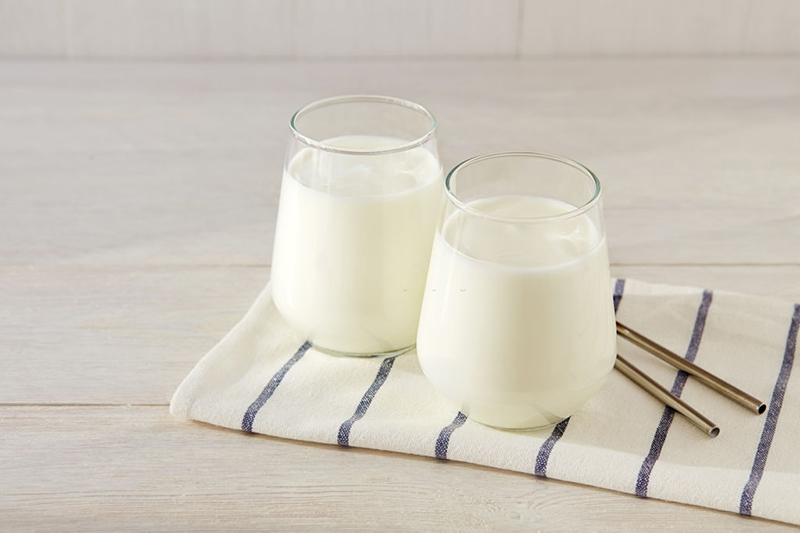Yogurt is a dairy product made from the fermentation of milk by bacteria cultures. Streptococcus thermophilus and lactobacillus are two of the most common bacteria found in yogurt. We put up an experiment with two arms to better understand the effects of yogurt strains on both the structure and operations of our gut microorganisms, as you mentioned. probioticseverything.comm&s probiotic yogurt
On one one, we had mice that had been raised in a sterile environment. Germ-free mice are what they’re called. We introduced a group of 15 normal members of our human gut community at a specific point in their lives. We also knew all the genes in this model community of our human gut bacteria since their genomes had been entirely sequenced. And we looked at the operations of this community for a while before assessing the impact of introducing the bacterial strains found in a popular, commercially accessible fermented milk product. probioticseverything.comm&s probiotic yogurt
We were also examining a group of adult, healthy identical twins at the same time. And then we followed them for a while, sampling their gut communities, and then we gave them all the same commercially available product and watched how it affected them over time, and then we stopped giving them the product and watched to see if the live bacterial strains associated with it disappeared in a predictable way. probioticseverything.comm&s probiotic yogurt
Consumption of these live bacteria did not significantly affect the representation of preexisting bacteria in the stomachs of humans or mice, according to our findings. It had no effect on gene representation. Rather, it had an impact on how these communities functioned, namely the pattern of expression of microbial genes involved in specific elements of metabolism, most notably the metabolism of complex carbohydrates, polysaccharides. probioticseverything.comm&s probiotic yogurt
And what we saw in mice, we saw in humans, which gave us hope because, in this field, where many claims are made about the health benefits of probiotics, we felt it was critical to be able to establish a rigorous testing scheme, where we could look at the impact of these strains on gut communities under very controlled conditions, take the lessons learned from these models, and apply them in an informed and directed way to humans. probioticseverything.comm&s probiotic yogurt
As a result, a typical serving of yogurt contains a few billion bacteria. That is, without a doubt, a significant number. Consider for a moment that our human guts are home to tens of trillions of germs, the majority of which are bacteria. So it’s only a small percentage of the population.
And the similarities between what we observed in mice and what we observed in humans should not be surprising. We dosed the mice at a level that is comparable to human dosing, and the overall architecture, or structure, of these communities did not change. Rather, there was a type of communication between the yogurt strains and the typical resident bacteria in the stomach, which we don’t fully understand. And that communication changed the features of gut ecosystems, most notably the way they digested polysaccharides. probioticseverything.com
What is the significance of this? Polysaccharides, which are ubiquitous in our diet, are molecules, big molecules with complicated chemical interactions. We don’t have the proper dining utensils to break down these polysaccharides. Rather, we rely on our gut bacteria to mobilize these instruments – enzymes – to break down polysaccharides in ways that are useful to both us and them. probioticseverything.comm&s probiotic yogurt
The modification in this example involved a succession of polysaccharides, which are commonly found in our meals. I’ll tell you who they are. Fruits and vegetables, milk, honey, and wheat all contain xylans. Apples, plums, oranges, and carrots are high in pectins. In jams and jellies, they are the jelling agent. The other type of polysaccharide found in our diet, fructans, can be classed as well. Wheat, barley, garlic, onion, and asparagus all contain them. And, yet again, these are common foods in our diets. These are components that our gut microorganisms are responsible for breaking down. Furthermore, the introduction of particular yogurt strains appeared to boost our ability to break down certain dietary components. probioticseverything.comm&s probiotic yogurt
They emerged not just at the level of gene expression, but we also assessed the digestible products in these mice models, which proved to be quite instructive. They backed up our findings at the gene expression level, saying that a little number of bacteria ingested can influence the features of a gut ecosystem. probioticseverything.comm&s probiotic yogurt
There are likely some differences in the amount of bacteria present in your gut at the time you consume yogurt. We have no idea what to do about dosage. We don’t know how the diets of people who consume yogurt affect the impact of yogurt strains on the digestion of other foods in our diets.

